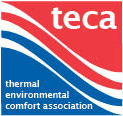
About Forced Air Heating
September 8, 2017
The biggest, single problem in residential forced air furnace installations is the installation of oversized furnaces with undersized duct systems.
These installations jeopardize occupant comfort and equipment efficiency and longevity. Most importantly, however, they jeopardize the health and safety of the occupants. Bigger is not better when it comes to your gas-fired furnace! When the thermostat calls for heat, an oversized furnace comes on frequently - often 3 or 4 times per hour - for very short periods of time. This is called short cycling and happens because the furnace is blowing excessive amounts of hot air into the home and raising the room temperature too quickly. Consequently, the thermostat will shut the furnace off before the temperature in the furnace chimney is hot enough to burn off combustion gases like carbon monoxide. This is dangerous! The safe operation of the heat exchanger in the furnace also suffers in two ways from short cycling. First, due to the low chimney temperatures, moisture condenses in the chimney and runs down into the furnace instead of being evaporated. This causes heat exchangers to rust, shortens heat exchanger life and leads to unsafe operation since rust interferes with complete combustion. Second, the constant on/off cycling fatigues the metal of heat exchangers causing them to crack prematurely and, again, to operate in an unsafe manner. Comfort and efficiency are also jeopardized by such installations. A furnace is designed to deliver a specific amount of air, expressed in BTU/hr, at a specific velocity, expressed in CFM (cubic feet per minute). In order for a furnace to function at its rated efficiency and quietly deliver warm air to every room in your home, the following steps must be taken. 1) A heat loss must be calculated for your home so a properly sized furnace can be selected. 2) The number and size of trunk ducts and room duct runs must be calculated and laid out to meet the furnace's operating requirements. 3) Proper duct fittings, grills and registers must be selected to keep turbulence and noise in the system to a minimum. 4) Ducts, especially return air ducts, must be properly sealed with a paint-on sealer, not duct tape. If the return air system is undersized and/or improperly sealed, the furnace will be starved and suck air from wherever it can. This creates negative pressure that increases the risk of combustion by-products being delivered throughout the home. This negative pressure can also extinguish pilot lights on other gas-fired appliances, such as hot water heaters, which are often installed in the same space as the furnace. A trained contractor also knows the safety & efficiency of your forced air system can be affected by large exhaust appliances like kitchen fans.Problems Arising from Incorrect Furnace Installation.
Click here to view this page online with additional details.
PO Box 73105, Evergreen RO, Surrey, BC, V3R 0J2
Tel: 604.594.5956
Fax : 604.594.5091
Website: www.teca.ca